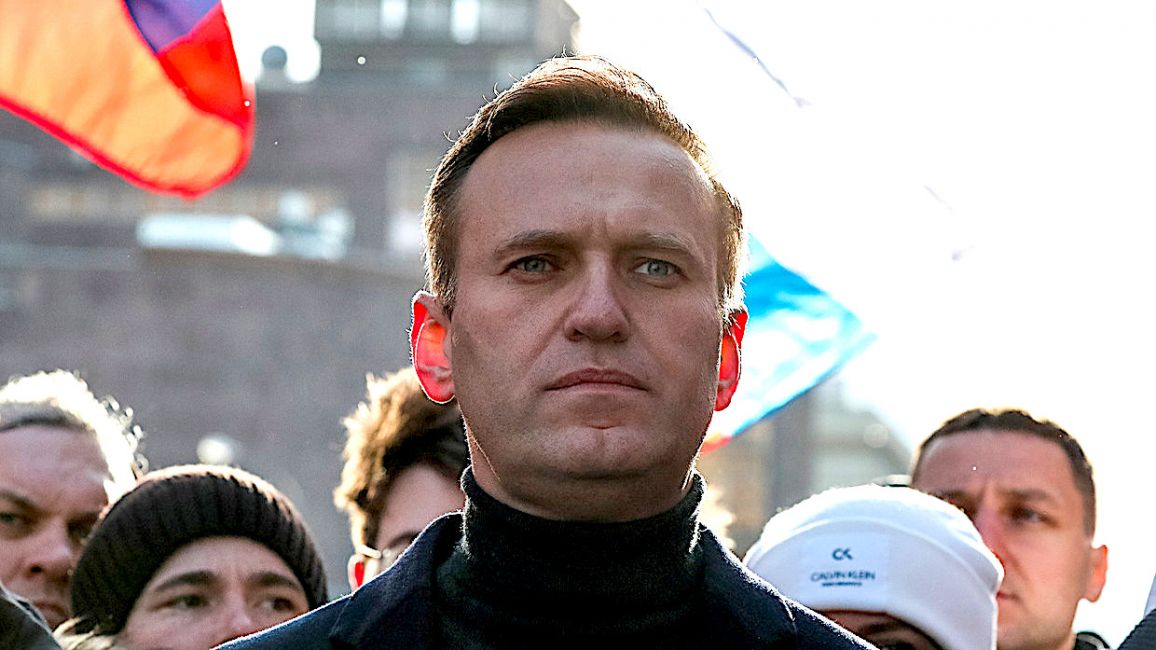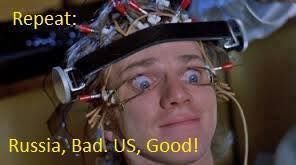Caleb T. Maupin
OpEds

Alexei Navalny, the anti-Kremlin "anti-corruption" activist supported by the Western hybrid war machine.
With the US election taking place on November 3rd, the eye of the global media shifted away from Alexei Navalny. Navalny is the favored “transparency” and “anti-corruption” activist of the United States and its allies. His unproven and unclear allegations about being poisoned are presented in the press as undisputed fact, and Russia is denounced as “undemocratic.” Navalny struts through Berlin with a police escort, being widely pointed to as smoking gun proof that Russia’s leadership is somehow illegitimate.
On November 3rd, the forces that rally around Navalny almost unanimously revealed themselves to be complete and utter hypocrites. These “democracy” activists piled no condemnation on the United States as it convened a Presidential election, despite a number of disturbing irregularities. In 18 different US States, monitors from the OSCE were denied access.
The conservative organization known as Judicial Watch reported that 353 counties in more than 29 states across the United States had voter registration rates above 100%, meaning that there were more people registered to vote than eligible voting residents. This is hardly a small irregularity, but the Navalny crowd has felt no need to highlight it. One will recall how 4 cases of a single person attempting to vote twice in Russia’s constitutional referendum became the source of outcry just a few months earlier.
The phenomenon of dead people voting (i.e. fraudster voting in the place of the recently deceased) has been a widely highlighted form of voting irregularity in the United States for many decades, so much so that comedians regularly bring it up as a punch line. According to the New York Post, the 2020 elections did not pass without a few individuals being arrested for attempting this in New York City.
However, in North Dakota, the country saw a new twist on this cliché vote rigging maneuver. In North Dakota, a dead man named David Andahl won the election for the State House of Representatives. Despite the fact that Andahl perished from COVID-19, his name was on the ballot and he received the most votes. The day before the election, the State Governor attempted to name Andahl’s replacement, but was blocked from doing so by the courts. North Dakota’s Attorney General said the governor has no right to select who should serve in Andahl’s place, so at the moment the seat is completely vacant, despite the results being certified. The residents of North Dakota who voted for David Andahl still do not know who it is they were casting their ballots for, and who will represent them in the State Legislature as a result of their voting. The incident is almost farcical, and if such an occurrence took place in Russia the condemnation and outrage would be deafening.
Donald Trump has continued to raise concerns about the fact that the mail-in ballots which were counted late seemed to overwhelmingly favor the Democratic Party. Republicans and Trump supporters are accusing the Democrats of “ballot dumping” because in many cases the batches of mail-in ballots seemed unrealistically disproportioned for the Democrats. Similar concerns can be raised about the results in many urban areas in the United States. In San Francisco, Joe Biden won 86% of the vote. In the Metropolitan area of Washington DC, Biden won 92.6% of the vote.
These results are similarly found in urban centers throughout the country, and may be very legitimate, reflecting the deepening divide between rural and suburban Americans and those who live in densely populated areas. But let's not forget that the “independent observers” who criticize Russia’s elections continue to raise concerns about districts in the Russian Caucuses where candidates receive 80% to 90% of the vote. In these cases, the results alone are considered to be “suspicious” and treated as almost proof of fraud. No such concerns seem to come from Nalvany’s supporters regarding the US election results.
The atmosphere surrounding the US elections is also worth noting. With COVID-19 restrictions still in effect, the media continued to play up the fear of rioting in response to the results. Across the country National Guard units were called up, and a heavy police presence was very visible on Nov. 3rd when the public went to vote, if they had not voted early or through the mail. Gun sales skyrocketed, and it was clear that the public was whipped up into a state of terrified anticipation. Residents were led to believe that terrorist attacks from right-wing militias, violent protests by leftists, retaliatory targeted attacks by anti-fascists, or other bloodshed was nearly inevitable in the election’s aftermath. Imagine of such an atmosphere had been created in the lead up to a contested Russian vote?
The United States continues to hold its national elections on a working Tuesday, with no national holiday. Many states deny those convicted of felonious crimes the right to vote for the remainder of their entire lives. The influence of social media companies over the US public and their decision to suppress news stories critical of certain candidates is also being highlighted, and became a major source of outrage in the weeks before the vote.
If the Navalny supporters who constantly condemn Russia’s political system and leaders were really nothing other than human rights activists, their voices would be speaking up louder than ever about recent events in the United States. However, they remain silent, indicating that their motives are far more geopolitical than they are principled.
 Caleb Maupin has worked as a journalist and political analyst for the last five years. He has reported from across the United States, as well as from Iran, the Gulf of Aden and Venezuela. He has been a featured speaker at many Universities, and at international conferences held in Tehran, Quito, and Brasilia. His writings have been translated and published in many languages including Farsi, Chinese, Russian, Arabic, Spanish, and Portuguese. He is originally from Ohio.
Caleb Maupin has worked as a journalist and political analyst for the last five years. He has reported from across the United States, as well as from Iran, the Gulf of Aden and Venezuela. He has been a featured speaker at many Universities, and at international conferences held in Tehran, Quito, and Brasilia. His writings have been translated and published in many languages including Farsi, Chinese, Russian, Arabic, Spanish, and Portuguese. He is originally from Ohio.![]()
[premium_newsticker id=”154171″]



